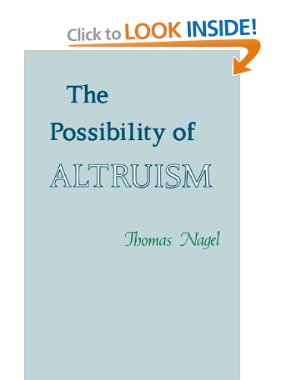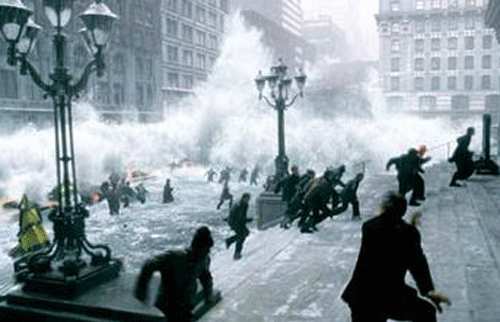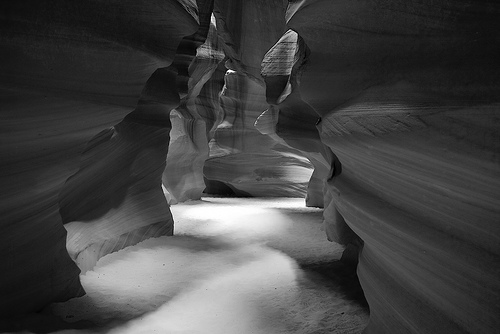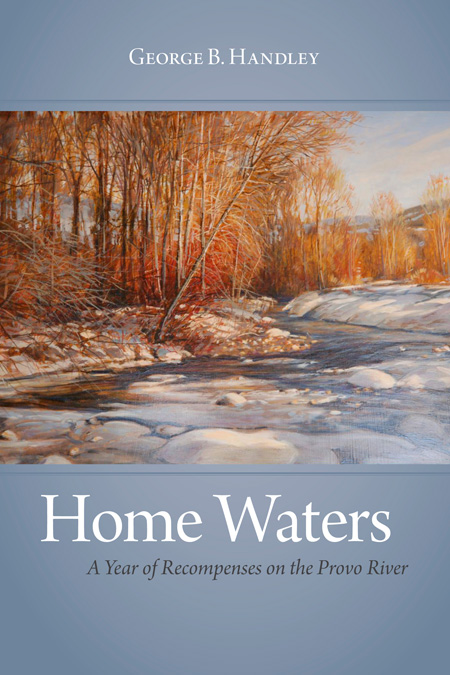Category: Nature and Environment
-

Latter-day Saint Book Review: The Doors of Perception, by Aldous Huxley
Psychedelics are having quite the moment right now, with many people claiming, or at least implying that they can provide a chemical shortcut to the kind of numinous affect that has traditionally been the purview of conventional religious practice, whether it’s praying in the celestial room while fasting, focusing on the Eucharist in a perpetual…
-
For the Beauty of the Earth
The latest move by the Church on the environmental front is the production of a beautiful, 94 second spot on the Mormon Channel.
-
Earth Stewardship: Doctrine, Principle, or Heritage?
I was recently told that earth stewardship is not a doctrine nor a principle of the gospel; rather, it is a heritage.
-

Stewards of Prudence and Altruism
Prudence and altruism combined allow us to delay personal gratification or even make sacrifices for the benefit of future people who have not yet been born. The hearts of the fathers must turn to their children
-
Guest Post: Mental Health, Mortal Life, and Accountability Part 5: The “Greater Sin”/ Sane Repentance & Forgiveness
[This is the fourth in a series of guest posts on Mental Health, Mortal Life, and Accountability. The first three installments are available here: Part 1:”Exceeding Sorrowful, Even Unto Death” (Mark 14:34), Part 2: Causes and (Mis)Attributions, Part 3: Fractured Images of God, Self, and Others, and Part 4: Accommodations in LDS Activities and Meetings] Now knowing…
-
Snow, Citizens, and Stewards
It has recently been announced that Steven E. Snow will replace Marlin K. Jensen as the new Church historian. Elder Jensen has been a wonderful historian for our church, bringing both compassion and honesty to the work.I expect this good work will continue under Elder Snow’s direction. I am curious to see what his areas of…
-
Mormons Do Care about the Earth
Mormons do care about the earth. We care about preserving, protecting, and maintaining it. We care about the earth because 1) We love God, 2) We care about other people, and 3) We believe in the intrinsic value of the earth.
-

Hurricane open thread
It’s going to be a long day for some East Coast readers, but at least you’ve still got Internet. This thread is to share your first-person accounts and post helpful information. My contribution: Weather Underground, the best online source for hurricane tracking information. As of 11 AM EDT Saturday, their tracking map forecasts a storm…
-

Home Waters: Recompense
Of his awakening, Dogen says, “I came to realize clearly that mind is no other than mountains and rivers, the great wide earth, the sun, the moon, the stars.” Tinged with enlightenment, you see what Dogen saw: that life is borrowed and that mind itself is mooched. Every day you’ll need something old, something new,…
-

Home Waters: Gene/ecology
Earth is stratified time. Use some wind, water, and pressure. Sift it, layer it, and fold it. Add an inhuman number of years. Stack and buckle these planes of rock into mountains of frozen time. Use a river to cleave that mountain in two. Hide hundreds of millions of purloined years in plain, simultaneous sight…
-
Home Waters: Soul as Watershed
Spurred by Handley’s Home Waters, I’ve been reading Wallace Stegner. Like Handley, Stegner is interested in the tight twine of body, place, and genealogy that makes a life. On my account, Handley and Stegner share the same thesis: if the body is a river, then the soul is a watershed. Like a shirt pulled off…
-

Home Waters: Overview
George Handley’s Home Waters: A Year of Recompenses on the Provo River (University of Utah Press, 2010) practices theology like a doctor practices CPR: not as secondhand theory but as a chest-cracking, lung-inflating, life-saving intervention. Home Waters models what, on my account, good theology ought to do: it is experimental, it is grounded in the…
-

Writings in the Stone
Some years ago I sat in a Gospel Doctrine class taught by a physician. I mention his profession because I think it matters, as he took the opportunity to deviate from the lesson and condemn in the strongest terms the theory of evolution. He labeled it a satanic concept, one that we must avoid, one…
-
The Downstream Principle of Language
I’m posting this at Times and Seasons as follow-up to a three-part series I wrote here a couple years back (see here, here and here). I’ve cross-posted it over at A Motley Vision’s companion blog Wilderness Interface Zone. September 17th marked the two-year anniversary of the closing of Crossfire Canyon (real name: Recapture Canyon) to…
-
He Is Not in the Desert
“So if anyone tells you, ‘There he is, out in the desert,’ do not go out; … do not believe it” (NIV Matt. 24:26).
-
Four sources of the Apocalypse
With the past two months, I have read — for various reasons — four different novels laying out apocalyptic events within the United States. Here are the novels, in the order I read (or re-read) them, and with the reasons why I read them: — Lucifer’s Hammer by Larry Niven and Jerry Pournelle (1977): a…
-
Nature and Cities
I often find walking in nature a spiritual experience, for want of a better term. Growing up, I think that I found my testimony in part by tramping through the Wasatch Mountains and watching thunder storms roll across the Great Salt Lake. Today, I am likely to have real moments of reverence and gratitude to…
-
Mormons, Politics, and Morality
Some of the thoughts of a commenter on my last post, got me thinking about Mormons, politics, and morality. My observation is that the issues that set off moral alarm bells for most Mormons are those that deal with issues relating to what I would consider “freedom to sin†or “prohibitions of obvious sins.â€
-
Changing Conceptions of Zion
The Mormon conception of Zion has changed dramatically over the past century. Today’s members of the church are likely to define “Zion” as wherever the members of the church are: LDS homes, congregations, and stakes. While the conception of Zion in the 19th century may have included these elements, these Saints were determined to literally…
-
Why Joseph Went to the Woods
Joseph Smith went to the woods because he wished to know the truth of his existence.
-
A Walk into the Moon
I hope some of you grabbed your moon glasses and stepped outside to have a look at how that full moon lights up the world. Thirty thousand miles closer than usual and thirty percent brighter, tonight this lesser light has a chance to really shine.
-
Women Who Know
… grow tomatoes in their home garden, and lots of them. Men who know grow them, too.
-
Crossfire Canyon: A study in conflict, part three
See Part Two posted 9/27. On September 22nd, I rose early and hiked into Crossfire. Afterward, I stopped at the local market and ran into a women I’d seen at the BLM’s open house, one of the most vocal SPEAR members present that night. We greeted each other and she demanded to know who I…
-
Crossfire Canyon: A study in conflict, part two
See Part One here. On September 18th, the BLM held an open house explaining the closure to local residents. The BLM’s acting field manager opened the presentation, telling everyone that the purpose of the closure was to stop traffic through cultural sites. It wasn’t intended to be permanent, he said.
-
Crossfire Canyon: A study in conflict, part one
Crossfire Canyon is not the canyon’s real name. Following the trend in nature writing, I have refrained from providing any obvious identifying names or details. Otherwise, this three-part series describes actual events and conversations. Mormons in Utah, especially in southern Utah, often find their concepts of stewardship put to the test when predominantly non-Mormon environmental…
-
Guilting the Lily
In the Preface to New Genesis: A Mormon Reader on Land and Community, the editors cite an unidentified 1991 report that places each of the thirty largest Christian denominations in one of five categories based on their environmental stances.

